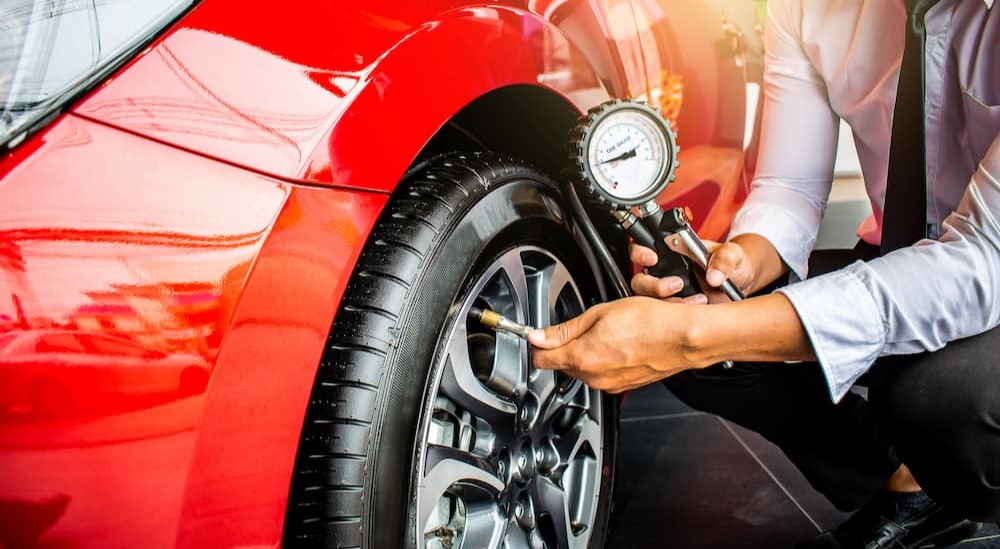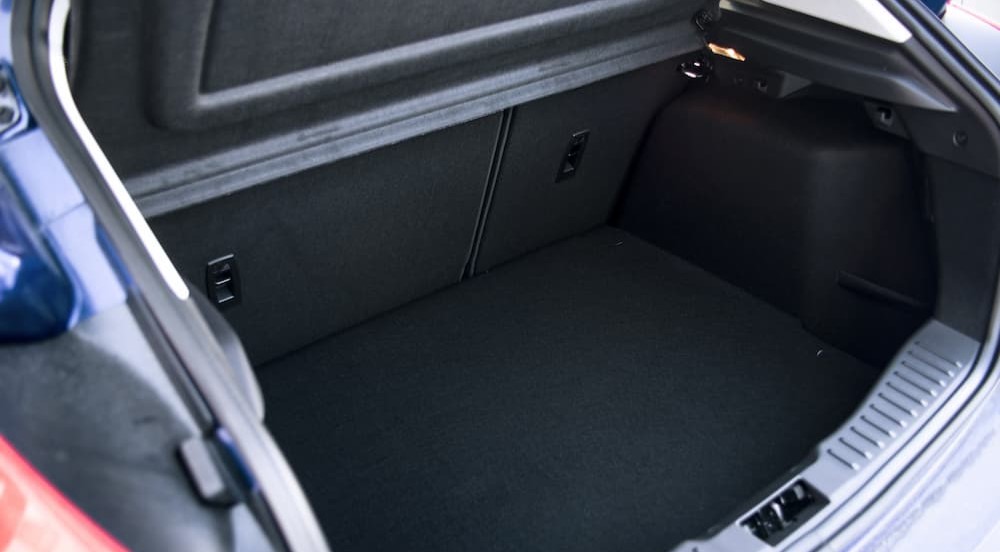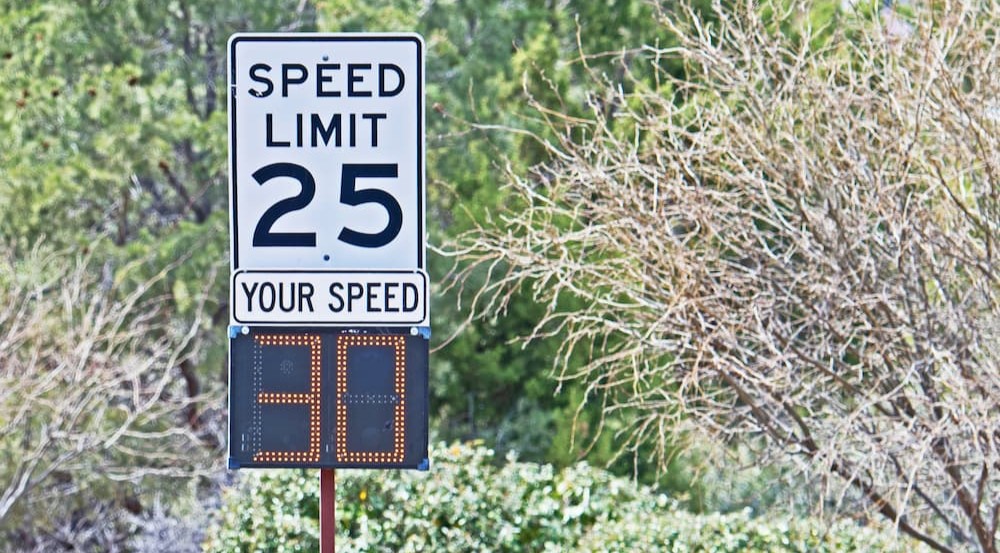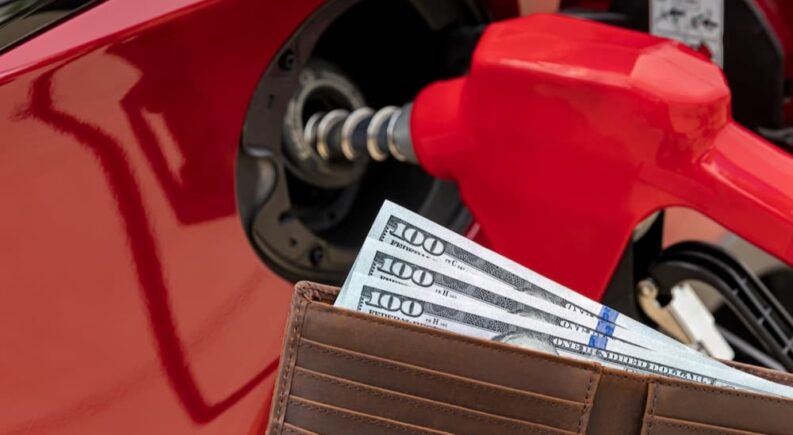Fuel economy has come a long way in the last 50 years. The early 1970s marked a low point for fuel efficiency with vehicles averaging just 11.9 miles per gallon, but things have generally been on the upswing since then. Much of the credit goes to the Corporate Average Fuel Economy (CAFE) standards passed by Congress in 1975, which aimed to double passenger vehicle efficiency to 27.5 mpg. The CAFE standards worked a treat, with light-duty average fuel economy rising by 68% by 1987, though fuel economy took a bit of a tumble from 1988 to 2004 as pickups and SUVs–which were exempt from the CAFE standards thanks to their light-truck status–became increasingly popular. Average fuel economy rebounded in the early 2000s as the standards were once again raised, growing some 29% between 2005 and 2020 to reach a current average of around 25.7 mpg.
With inflation on the rise and oil prices fluctuating as much as ever, the increased efficiency of today’s passenger vehicles is a financial blessing for many drivers. The advent of hybrid, plug-in hybrid, and all-electric vehicles has gone a distance toward greening the automotive sector, but there’s still a long way to go. Gas-powered vehicles still represent 91% of the market and while hybrids and EVs are becoming more affordable every day, they’re still not a practical choice for many drivers. Luckily, there are plenty of simple ways to boost your vehicle’s average fuel economy, giving you the power to reduce your carbon footprint and save money at the pump. From properly inflating your tires and changing your spark plugs to reducing the use of climate control and changing some of your driving habits, we’ll explore some of the easiest tips to improve fuel efficiency.

Tip #1: Pump It Up
Keeping your tires inflated to the recommended pressure is one of the easiest ways to improve your vehicle’s fuel efficiency. Underinflated tires have increased rolling resistance, which is a fancy way of saying that they’re less efficient at moving due to increased friction. According to some studies, underinflated tires can reduce a vehicle’s fuel economy by as much as 3 to 5 percent, which translates to around 1.5 mpg on the average vehicle. It might not sound like much, but with unpredictable fuel prices plaguing the industry, it’s always nice to save where you can. Pro tip: the “Max PSI” stamped into the sidewall of your tire isn’t the recommended PSI, but rather, the maximum pressure that a tire can safely handle. To find the recommended pressure for your vehicle, take a look at that handy owner’s manual tucked away in your glove box or the sticker inside the driver-side door.
Tip #2: Don’t Stay Idle
This one should probably go without saying: If you’re sitting in a car that’s not going anywhere you are, by definition, getting zero MPG. Even when an engine is idling it still consumes around a half-gallon of fuel per hour, so unless you’re trying to stay warm in the middle of the winter, avoid letting your vehicle sit at an idle for more than a minute or two. Restarting your engine will only use up around 10 seconds’ worth of fuel, so while it might not seem like the most efficient choice, it’s the right option in most scenarios. This is why so many new vehicles include a stop-start feature that automatically shuts off the engine after a short period of inactivity. Automakers are desperate to meet efficiency standards, and the stop-start system is one of the easiest ways to improve overall fuel economy without reducing performance.

Tip #3: Pack Light
While we all try our best to reduce clutter, it’s all too easy to let your vehicle become a storage unit on wheels. Between sports equipment and kid’s toys, cargo boxes and bike racks, it can start to add up, loading your vehicle down with some extra weight that isn’t doing you any favors at the pump. An extra 100 lbs can easily reduce a vehicle’s fuel economy by as much as 2 percent, so it’s important to make regular cleanings a part of your maintenance schedule.
I’m not recommending you ditch your spare tire, but a quick survey of your vehicle will probably turn up at least a few non-essential items that could easily be left at home. Also, be mindful of the aerodynamic properties of any externally-mounted accessories like rooftop cargo boxes. According to experts, a roof-mounted cargo box can reduce overall efficiency by 6 to 17 percent while a rear-mounted alternative will only ding your efficiency by 1 to 5 percent.
Tip #4: Check Your Speed
While 45 mph might seem slow for some drivers, it also happens to be the speed at which fuel economy tends to peak. For every 5 mph over 45 mph you drive, you’re essentially throwing away $0.25 per gallon, which can start to add up if you have a particularly leaden foot. Fuel economy decreases by 12.4 percent between 50 and 60 mph and an additional 14 percent between 60 and 70 mph, according to a study of fuel economy in cars and light trucks conducted by the Oak Ridge National Laboratory.
Want to push the speedometer into the 70- to 80-mph range? You’ll be throwing another 15.4 percent fuel efficiency out the window. You’ll also be driving much faster than you can react if something suddenly goes wrong ahead of you. Using cruise control–along with avoiding rapid acceleration or braking–is one of the easiest ways to address this issue, so never hesitate to throw your vehicle on autopilot if you have a decent stretch of highway driving ahead of you.
Tip #5: To AC or Not to AC?
Air conditioning is one modern comfort that most drivers couldn’t imagine doing without, but blasting your vehicle with cool air on a sweltering day can have a big impact on overall fuel economy. A vehicle’s air conditioning system draws its power from the alternator, which is in turn powered by the engine. This means that whenever you switch that AC on, you’re putting extra strain on your engine that translates into reduced fuel efficiency.
Rolling down your windows or sunroof is usually a good alternative, but it all depends on how fast you’re going. At lower speeds, some natural air conditioning can help to improve fuel economy, but above 50 mph, the equation starts to change. The increased wind resistance your vehicle has to battle through can negate any fuel-saving benefits that might come from foregoing the AC. So if you’re moving at higher speeds, then you’re usually better off sticking with air conditioning.

Tip #6: Don’t Skip Maintenance
While it’s tempting to skimp on regular maintenance tasks, doing so can have a noticeable effect on fuel economy. From clogged air and fuel filters to worn-out spark plugs and motor oil that’s past its prime, it’s important to stick to a regular maintenance schedule if you want to keep your car efficient and on the road for as long as possible. A plugged-up air filter can cost a driver up to 10 percent of their predicted gas mileage, while fouled motor oil and a clogged filter will also force the engine to work harder.
Worn spark plugs might be the biggest risk factor as they can cause an engine misfire that will reduce fuel economy by up to 30 percent, so it’s important to remember to switch them out based on your vehicle’s service schedule. If you’re looking for a quick way to improve fuel economy, try mixing a little fuel-cleaning additive into your gas tank. These products can help dissolve the impurities and sediments that build up in your tank before they reach your fuel injectors, making for a more precise air/fuel mixture that delivers maximum efficiency.
Optimal Fuel Efficiency Is Easy to Achieve
Gas-powered vehicles might never be able to achieve the enviable mpg ratings of hybrid and electric models, but with a little know-how, it’s easy to squeeze every last mile from each gallon of fuel. Some of these methods might be easier than others, because while flicking on the cruise control or adding a little fuel-cleaning additive to the tank is fairly simple, changing one’s ingrained driving habits can be a different story altogether. Slow, steady acceleration and gradual braking can be hard guidelines to follow when you’re stuck in stop-and-go traffic or running late for a school pick-up, but they’re worth it. When possible, try to avoid traffic and batch your errands together so you’ll spend less time backtracking between tasks. With a little planning and patience, achieving your vehicle’s maximum fuel economy is well within reach.

